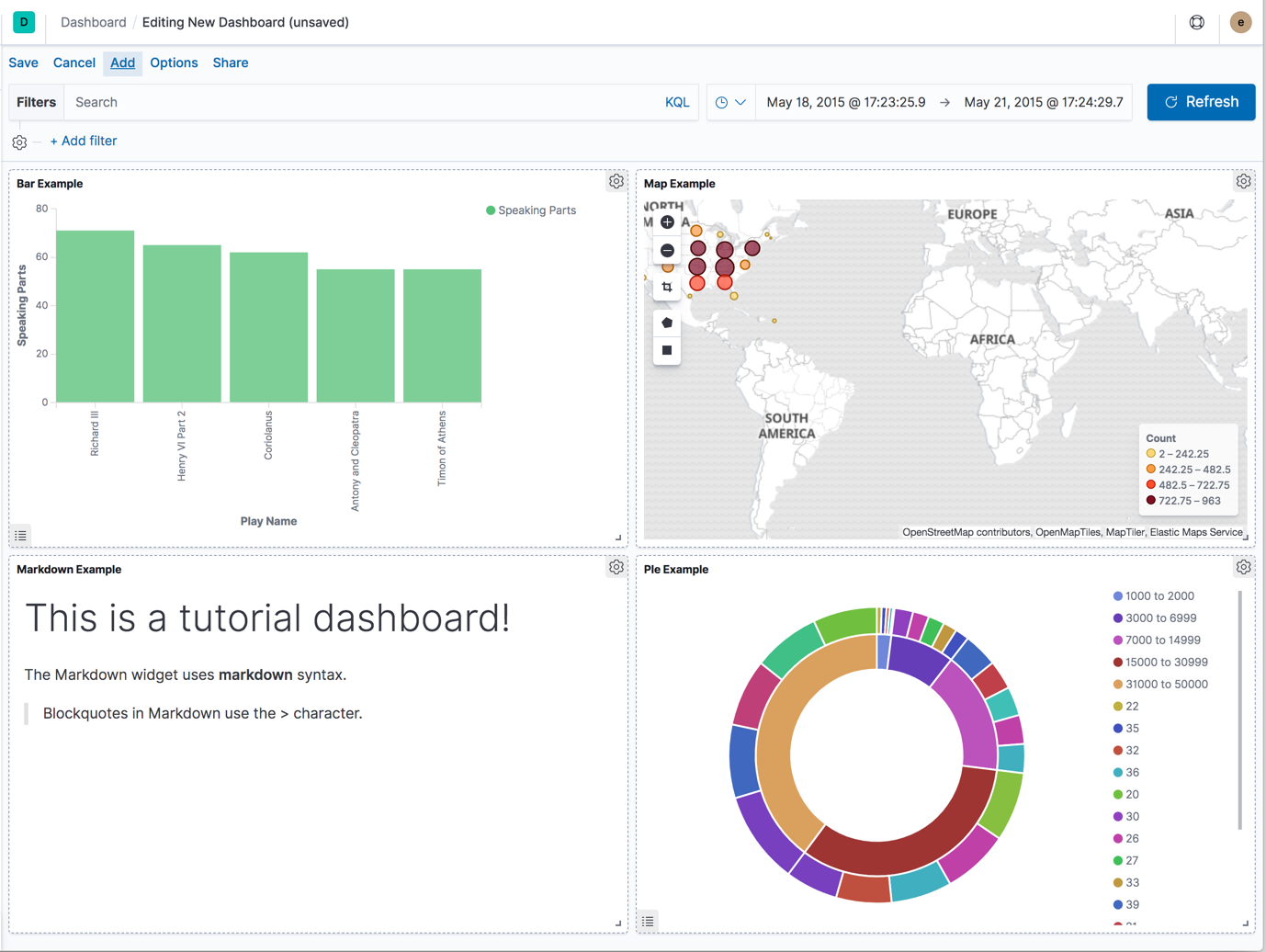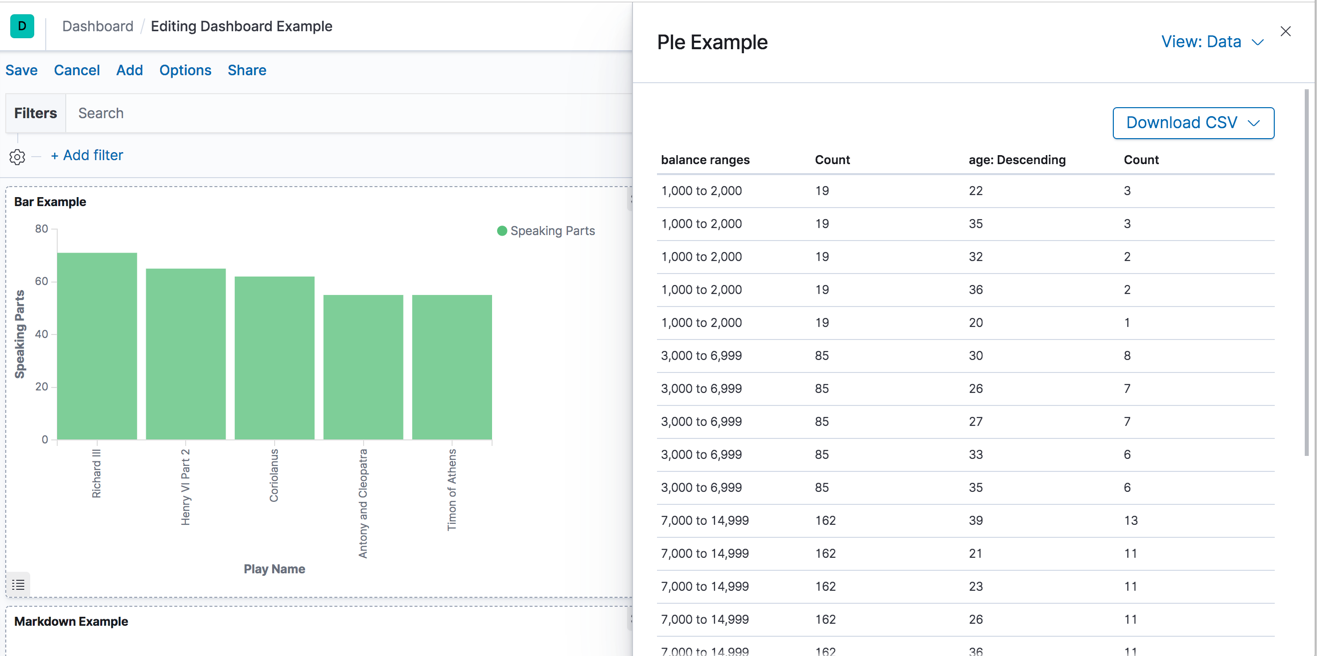Add visualizations to a dashboard
editAdd visualizations to a dashboard
editA dashboard is a collection of visualizations that you can arrange and share. You’ll build a dashboard that contains the visualizations and map that you saved during this tutorial.
- Open Dashboard.
- On the Dashboard overview page, click Create new dashboard.
- Set the time filter to May 18, 2015 to May 20, 2015.
- Click Add in the menu bar.
-
Add Bar Example, Map Example, Markdown Example, and Pie Example.
Your sample dashboard should look like this:

-
Try out the editing controls.
You can rearrange the visualizations by clicking a the header of a visualization and dragging. The gear icon in the top right of a visualization displays controls for editing and deleting the visualization. A resize control is on the lower right.
- Save your dashboard.
Inspect the data
editSeeing visualizations of your data is great, but sometimes you need to look at the actual data to understand what’s really going on. You can inspect the data behind any visualization and view the Elasticsearch query used to retrieve it.
- In the dashboard, hover the pointer over the pie chart, and then click the icon in the upper right.
-
From the Options menu, select Inspect.

- To look at the query used to fetch the data for the visualization, select View > Requests in the upper right of the Inspect pane.
Next steps
editNow that you have a handle on the basics, you’re ready to start exploring your own data with Kibana.
- See Discover for information about searching and filtering your data.
- See Visualize for information about the visualization types Kibana has to offer.
- See Management for information about configuring Kibana and managing your saved objects.
- See Console to learn about the interactive console you can use to submit REST requests to Elasticsearch.